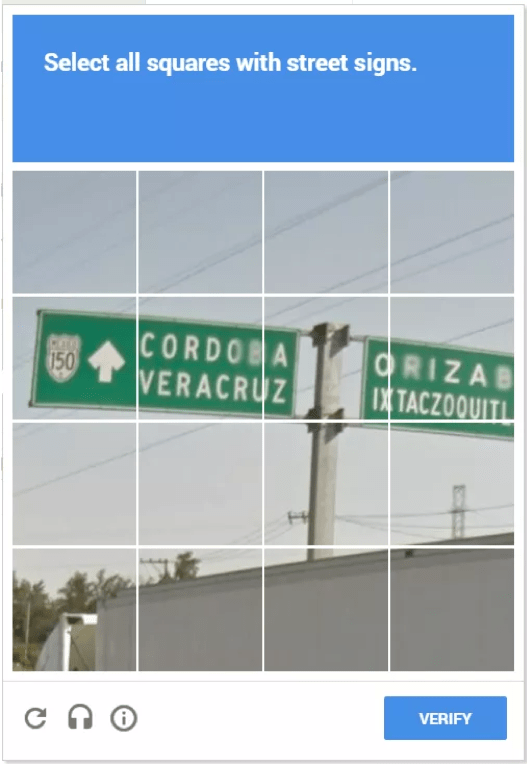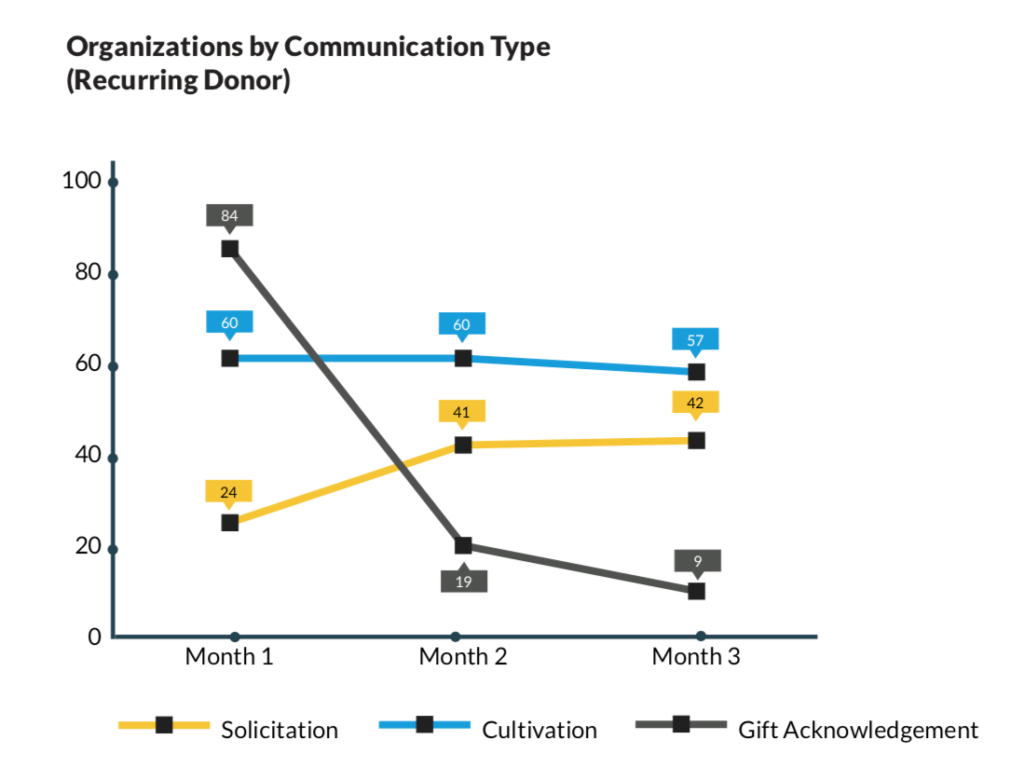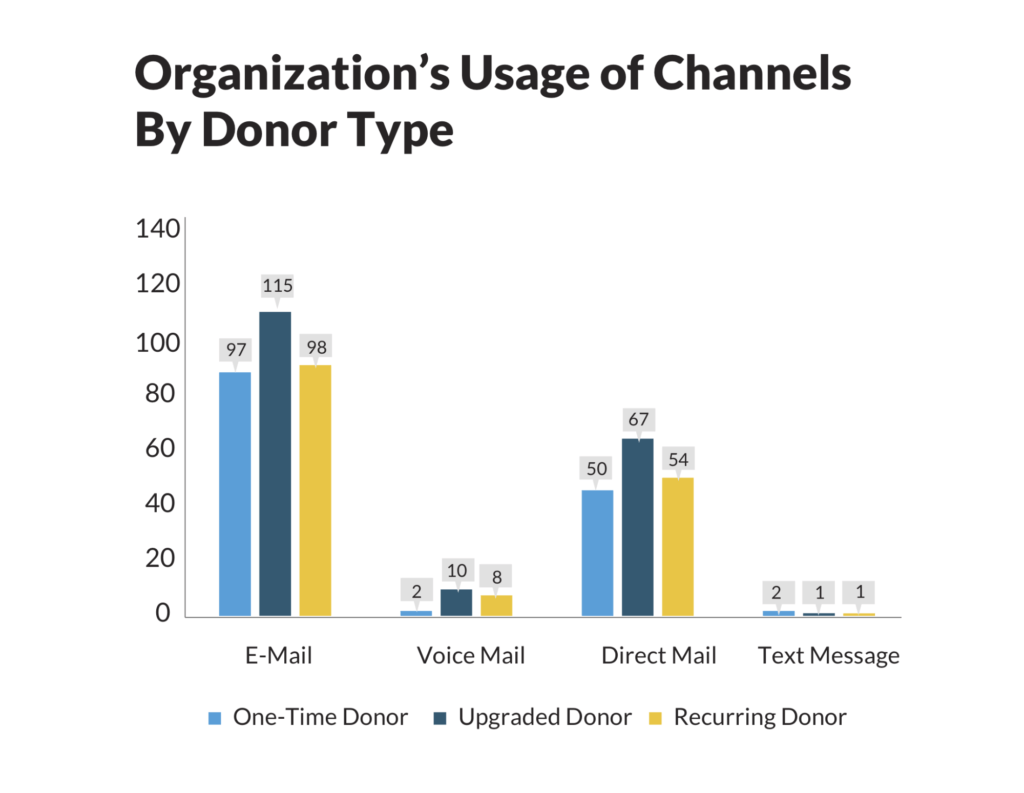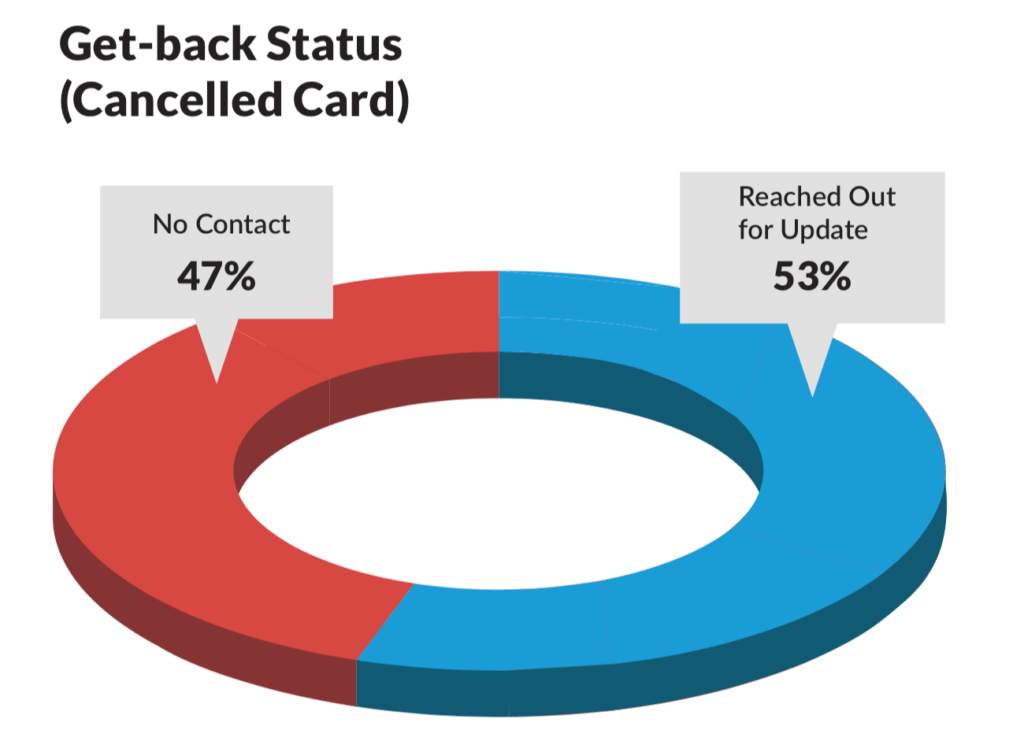
Shower monthly donors with love to rev up loyalty
Recurring giving is essential for organization sustainability and growth.
After all, what’s the point of all your hard work if you get only one donation from someone? That’s a super expensive way to fundraise, and sometimes you won’t even make back your investment. It’s called ‘churn and burn,’ and it’s depressing.
There’s a much better way. I know you’ve heard about it. I’ve written about it here, here and here. It’s called monthly giving. Or recurring giving.
Increasing the number of recurring giving donors is a really big deal! Recurring donors can give over 5 times more to you over their lifetime, as they are more likely to keep giving year after year. In fact, a 2016 study found that monthly recurring donors have a 90% retention rate, compared to the average donor retention rate of 46%.
This is HUGE, and should make you Stop. Dead. In. Your. Tracks. Wondering why on earth you’re not putting many more resources into this clearly winning fundraising strategy!
Yet, for a bunch of reasons, too few nonprofits engage in monthly, recurring giving.
Why?
To explore the reasons, and determine ways to overcome them, NextAfter joined forces with Salesforce.org to conduct a far-reaching study [The Nonprofit Recurring Benchmark Study] They made multiple donations, including a recurring gift to 115 nonprofits, and recorded their experience with each organization. The result was an analysis of the recurring giving process from the donor’s perspective. They found a bunch of areas of friction, plus offered up a slew of action items to help nonprofits improve their results. If you read the study, you’ll not only understand what works/what doesn’t work, but you’ll learn what to do about it.
No time to read the full study? Today I’ve invited one of the study authors, Brady Josephson of NextAfter, to share 7 techniques you can try for yourself to help increase the number of recurring gifts to your organization.
5 Nonprofit Recurring Benchmark Study Insights
1. It’s not that easy to actually make a recurring donation.
Many organizations identified in the study placed multiple barriers to giving by asking for unnecessary information like a spouse’s name and cell phone numbers (in addition to home phone).
Other giving pages had unclear language that was confusing or jargon that only people in the organization would understand.
A surprising number of the organizations forced the researchers to prove they were humans over and over again.

And the worst part was that 1 out of 10 of the organizations didn’t have a recurring gift option on their website!
2. Most organizations could cultivate their recurring donors more than they do.
Happily, recurring donors get solicited less and cultivated more. This makes sense as recurring donors are (most often) giving every month so the need to solicit should go down.
But over time, the research shows thanking/receipting goes way down, cultivation dips, and solicitation goes up.
 Basically, the difference between a one-time donor and a recurring giver appears to last only three months.
Basically, the difference between a one-time donor and a recurring giver appears to last only three months.
This is better than no difference at all. But… you can do better than that!
3. Despite being more valuable, recurring donors aren’t treated all that differently.
Recurring donors give to organizations each and every month, often for multiple years. You would think these high-value, committed, and engaged donors would get communicated to differently than those who give one-time gifts here and there.
But while we noted a few differences, recurring givers should be treated much more like the valuable donors they are.
FINDING: 38% of nonprofits make no change to email strategy for recurring donors, and 58% no change for direct mail.
When you also consider that email was the only channel used by every organization and accounted for just about 80% of all the communications we received, the donor experience of a recurring donor compared to a one-time donor is not significantly different.
4. Relational channels (like text and phone) are underutilized.
By becoming a recurring donor, the giver has made an express commitment to the organization and its cause. It’s something personal to that donor.
Yet many of the organizations in the study didn’t use more one-on-one communication channels like text or phone calls.

And, shockingly, recurring donors received more direct mail.
One would think that at least the amount of emails (which are almost free and can be automated) would have increased to personalize things a bit.
5. Over time, recurring donors are solicited more and acknowledged less.
In the first month, the organizations in the study sent high numbers of gift acknowledgments.
This makes sense because that’s the month the donor gave a gift. But what concerns me is that the numbers of solicitations dipped slightly in the second month, and had a steady increase in month three.
Gift acknowledgments are not just recognizing a past gift, they are paving the way for the next one. You can’t afford to skip out on gratitude!
So what do we do with these revelations from the study?
7 Powerful Ways You Can Test to Increase Recurring Giving
1. Make it easy for donors to make a recurring gift.
- First of all, finding the donation form should be a simple matter right on your homepage. Don’t make the donor wade through layers of your website to find your giving page.
- Put your donate button prominently in the navigation bar and make it stand out with different color and styling. As the results from our experiments show, emphasizing your donate button can significantly increase traffic to and conversions on your giving page.
Food for the Hungry’s homepage is a great example of an optimized donate button:

- Then it’s time to make your donation forms easy for the donor to complete. Eliminate extra and unnecessary form fields. Ask only for what you need.
- Use clear, everyday language on your giving page field labels. Ask someone outside your organization to read it and let you know if they understood what was being asked of them.
- And get rid of the endless humanity checks! Asking a donor to prove their humanity can create extreme frustration and erode trust. If you deal with spam issues on your donation page, ask your IT staff to help you create a hidden field that only a spam bot could check and then only process donations where that field isn’t checked (this technique is called a ‘honeypot’ and you can nerd out more here) in order to protect against fraud without burdening your donors.
2. Show donors WHY they should make a gift
You get what you ask for — so try making a separate call to action expressly for recurring giving.
Some examples from organizations that did a good job showing the value of recurring giving:
- “A recurring gift is the best way to end Trump’s agenda!”
- “A monthly gift shows your commitment to care, support, and research.”
3. Spend more time cultivating recurring gifts than you do soliciting.
If you are part of the 1 in 10 organizations that aren’t sending cultivating content to your donors, now is the time to start.
Send articles and updates about the impact of their gift that aren’t directly tied to a donation appeal. That way your donors have a better understanding of the value of their gift next time you send an appeal.
Donors need to be cultivated. Test sending more cultivating content (from once a month to weekly to daily) to evaluate how much is the right amount to cultivate the most valuable donor.
4. Get personal in your communication.
While your acquisition strategy might have a generic salutation like “Dear Friend,” your ongoing communications to recurring givers should be much more personal and warm.
Treat recurring givers like the valuable partners they are to your organization. Use their first names or their preferred names in each communication using your email and mail merge tools to place the first names of donors in the appropriate place in the email or letter. In our experiments, these personalization efforts have shown to increase donor trust.
Every communication needs to be both personal in its salutation and in its tone.
As demonstrated by this particular experiment where we took out the traditional branding elements that go with mass marketing and simply wrote to them as a friend would have written to them, people give to people, not organizations.
5. Amp up more relational channels like phone and text.
Getting personal also means choosing more personal channels of communication. Take the time to call your recurring donors.
Calling your donors and having an unscripted (yet on point) conversation makes donors feel you’re glad to have them aboard as partners in the mission. They’re not just funders, they’re friends along the journey.
These forms of communication are a bit more time intensive, but they’re worth it to show your recurring donors you’re returning the commitment to them as real partners in the cause.
A tip on automating this process: Use a communication tool like Slybroadcast to send out a mass voicemail campaign.
6. Recognize that recurring donors are in a league of their own.
In other words, create a separate communications plan for recurring donors for a whole year, not just for the first 30 or 60 days.
Ongoing, specialized messaging for recurring givers makes them feel like they’re more than another donor. They’re part of an exclusive, important group of people who are sustaining your organization through their faithful giving.
7. Improve customer service for your recurring givers.
These guys have stepped up in a big way for you, it’s time to do the same!
- Keep up the acknowledgements for gifts every month to show them how their continued giving is still making an impact. You can do this in a paperless fashion through email, but the important thing is to say, “Thank you!”

- Have a plan for when cards are lost, stolen, or expire. Credit card changes are one of the biggest factors in losing recurring donors.
- One solution is to accept and encourage more EFT or ACH transfers from the donor’s bank account (which is unlikely to change) to yours. In this experiment, lifetime value grow 55% just by allowing donors to set up their recurring gifts this way. Another is to use modern tools to help automatically update the cards—like 68% of organizations in the study did. If you don’t have those automatic tools, you’re on your own to reach out and contact donors and these rates show significant room for improvement to simply contact donors of lost and cancelled credit cards.
How are you showing love to your recurring givers?
Increasing recurring giving is an important way to sustain your organization and bring donors closer to the heart of what your cause accomplishes. So review the 5 study insights above, ask yourself the two questions below, and take the 7 strategies suggested above to heart!
- What can you do to make it easier for people to become recurring givers?
- What are you doing to show your recurring givers they’re an integral part of the mission?
For more insights and next steps to improve recurring giving, download The Nonprofit Recurring Benchmark Study.
 Brady Josephson, VP of Innovation and Optimization at NextAfter, is a charity nerd, wannabe entrepreneur, digital marketer, adjunct professor, and frequent writer. An international speaker who has been featured in The Huffington Post, Christianity Today, NPR, and The Chronicle of Philanthropy, Brady is also a host of The Generosity Freakshow, a podcast discussing how to improve, optimize, and grow generosity. He lives just outside Vancouver, British Columbia, Canada with his wife Liz, son Hendrix, dog Melly, and cat Thor. You can follow him on Twitter @bradyjosephson.
Brady Josephson, VP of Innovation and Optimization at NextAfter, is a charity nerd, wannabe entrepreneur, digital marketer, adjunct professor, and frequent writer. An international speaker who has been featured in The Huffington Post, Christianity Today, NPR, and The Chronicle of Philanthropy, Brady is also a host of The Generosity Freakshow, a podcast discussing how to improve, optimize, and grow generosity. He lives just outside Vancouver, British Columbia, Canada with his wife Liz, son Hendrix, dog Melly, and cat Thor. You can follow him on Twitter @bradyjosephson.






Very valuable insight that we need to begin utilizing in our Non-Profit Organization. I think we will meet on this in the next few days to discuss it as a group and get thoughts and ideas from everyone involved. Thank You for sharing this study and providing the link to aquire it for future reference.
You bet! Thanks for commenting, and good luck. I’ve no doubt you’re increase donor retention and upgrade giving if you do this. 🙂